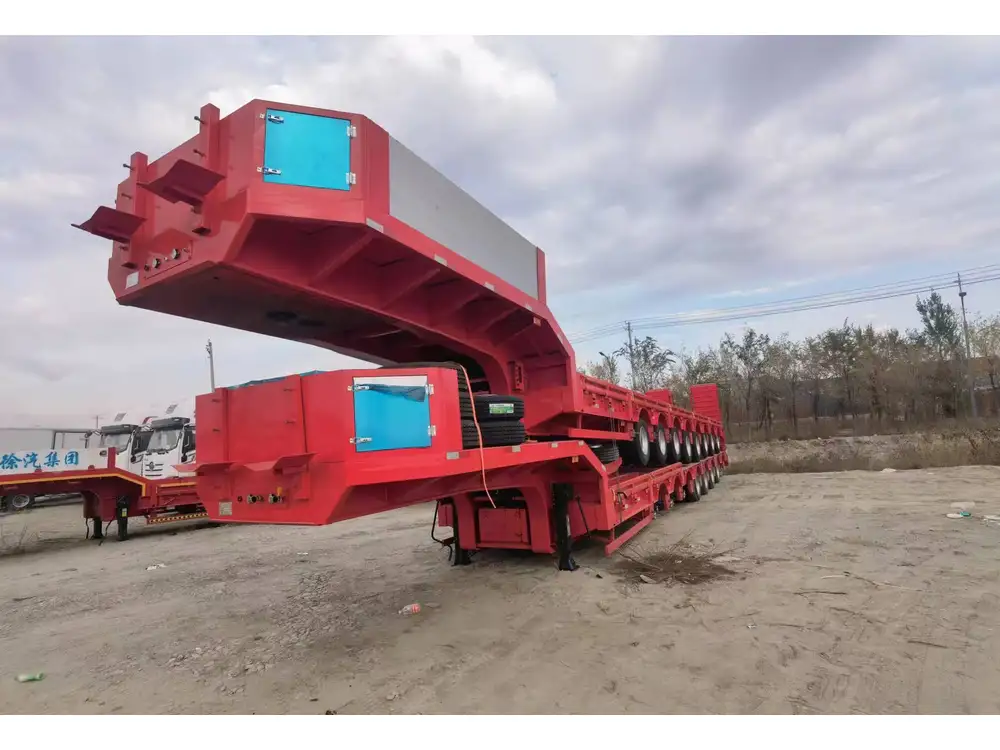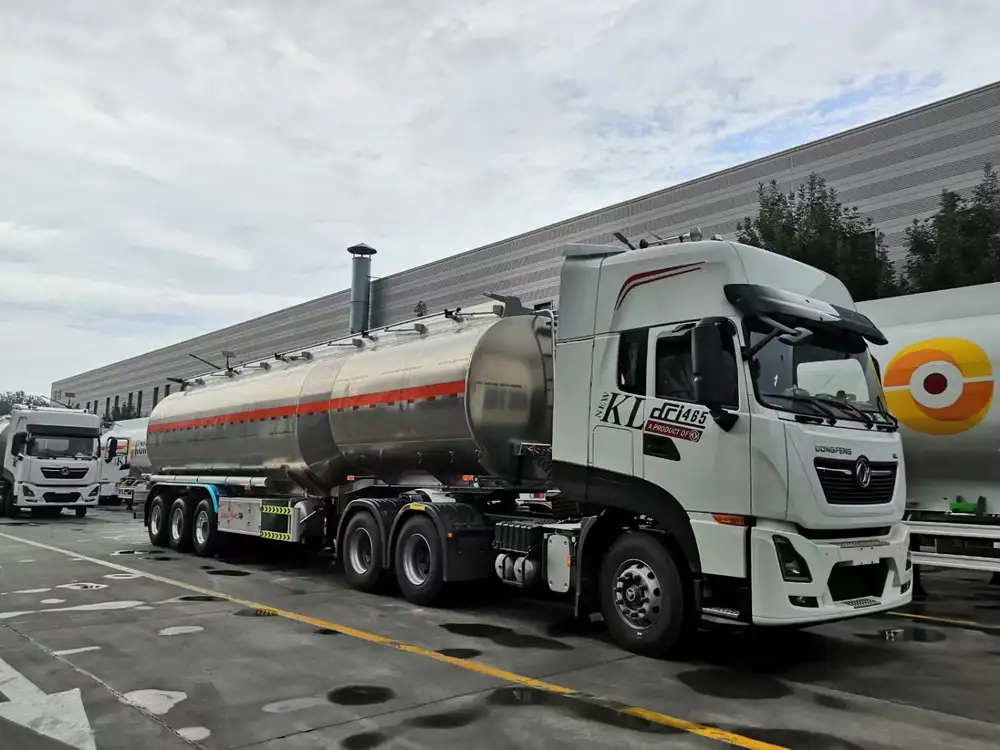Dump trailers serve as invaluable assets for transporting and offloading various materials in industries ranging from construction to farming. However, encountering an issue where your dump trailer won’t go down can be frustrating. Understanding the mysterious realm of hydraulic systems and electronic controls is vital. This guide aims to elucidate the diagnosing process for a dump trailer that won’t lower, ensuring you maintain productivity and minimize downtime.
Table of Contents
- Understanding the Mechanics of Dump Trailers
- Common Symptoms of Malfunction
- Tools Needed for Diagnosis
- Step-by-Step Diagnostic Process
- Frequently Asked Questions
- Conclusion
Understanding the Mechanics of Dump Trailers
Dump trailers operate using a hydraulic lift mechanism that raises and lowers the trailer bed. Typically, this system consists of:
- Hydraulic Fluid: Provides the necessary power to actuate the lift cylinders.
- Pump: Creates pressure in the hydraulic fluid.
- Lift Cylinders: Raise and lower the trailer bed.
- Control Valves: Direct the flow of hydraulic fluid based on user input.

Hydraulic Principle
In essence, when activated, the pump forces hydraulic fluid into the lift cylinders, which then extend and elevate the trailer bed. Conversely, for descending, the fluid exits the cylinders, allowing gravity and controlled flow to bring the trailer back down.
Common Symptoms of Malfunction
Before diving into diagnostics, it’s essential to recognize the various symptoms indicating hydraulic or electrical failure:
- No Response: The trailer bed does not move in either direction when the control is engaged.
- Slow Descent: If the bed descends slowly, it could indicate a hydraulic fluid leak or blockage.
- Uneven Movement: One side of the trailer appears to lower slower than the other.
- Fluid Leaks: Visible hydraulic fluid escaping from the cylinders or fittings.
Tools Needed for Diagnosis
Equipping yourself with the right tools is crucial for effective troubleshooting. Here’s a basic toolkit for your diagnosing session:
| Tool | Purpose |
|---|---|
| Hydraulic Fluid Gauge | To check pressure levels in the system |
| Wrench Set | For checking and tightening fittings |
| Screwdriver Set | For removing access panels and securing connections |
| Multi-Meter | To test electrical components |
| Inspection Mirror | To inspect hard-to-reach areas for leaks |
| Flashlight | To illuminate dark spaces in the hydraulic assembly |

Step-by-Step Diagnostic Process
Initial Inspection
The first step in diagnosing your dump trailer concerns a thorough visual inspection. Here are key aspects to review:
- Hoses and Connections: Look for cracks, fraying, or leaks in the hydraulic hoses. Ensure all connections are tight.
- Fluid Levels: Check the hydraulic fluid reservoir. If it’s low, top it off with the recommended hydraulic fluid type.
- Damage Assessment: Inspect the trailer frame and lift cylinders for visible signs of damage or corrosion.
Hydraulic System Checks
After the initial inspection, turn your attention to the hydraulic components:
Checking Hydraulic Fluid: Use a hydraulic fluid gauge to measure pressure. A reading below the manufacturer’s specifications indicates a potential pump failure or low fluid.
Testing the Pump: If the pump is accessible, apply power directly, bypassing the control circuit. If the pump operates, the issue might lie with the electrical system or control switches.
Inspecting the Lift Cylinders: If the cylinders appear damaged or oily, they may need replacement or resealing. Manual manipulation of the cylinders (while the trailer is unloaded) can also indicate how freely they move.

Electrical System Evaluation
Given the significance of the electrical controls, this section is paramount:
Battery Check: Examine battery connections for corrosion or looseness. Measure the battery voltage to ensure it’s within operational parameters.
Control Switch Testing: Engage the control switch while using a multimeter to check for voltage output. If absent, the switch may require replacement.
Wiring Inspection: Trace the wiring from the switch to the pump and ensure there are no breaks or shorts in the circuits.
Control Valve Assessment
The control valve plays an essential role in regulating fluid flow:
Valve Jam Check: Inspect the valve levers for any signs of jamming or obstruction.
Manual Override: If the valve has a manual bypass, try engaging it. If the trailer lowers, the issue is likely within the valve’s mechanical workings.
Sealing and Gasket Review: Ensure gaskets are intact. Degraded or damaged seals can result in fluid leaking, leading to pressure drops.
Frequently Asked Questions

What causes a dump trailer not to go down?
Several factors can contribute to a dump trailer that won’t lower, including hydraulic fluid leaks, pump failure, valve malfunction, and electrical system issues.
How can I tell if the hydraulic fluid is contaminated?
Contaminated fluid may appear dirty, cloudy, or discolored. Additionally, if the fluid smells burnt or has particulates, it requires flushing and replacement.
Is it okay to operate a dump trailer with a malfunction?
Operating a malfunctioning dump trailer carries risks, including further damage to the hydraulic system or potential injury. It is advisable to diagnose and rectify issues before use.

How often should I perform maintenance on my dump trailer?
Regular checks every few months are advisable, but more frequent maintenance is recommended for trailers used in harsh conditions or heavy-duty applications.
Can I perform repairs myself, or should I hire a professional?
For minor repairs and standard maintenance, DIY is feasible with the right tools and knowledge. However, for in-depth hydraulic and electrical issues, consulting a professional may be prudent.
Conclusion
Diagnosing a dump trailer that won’t go down is multi-faceted, requiring a blend of mechanical prowess and a methodical approach. By following the outlined steps and employing the right tools, you can effectively identify and rectify the underlying issues, ensuring your equipment remains functional and your operations continue smoothly. Armed with this knowledge and diligence, you are better equipped to tackle the challenges posed by hydraulic systems, paving the way for a more efficient and problem-free experience with your dump trailer.



